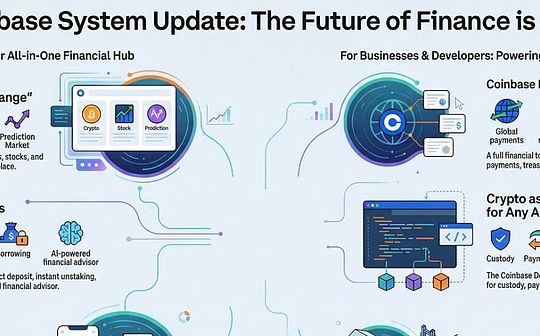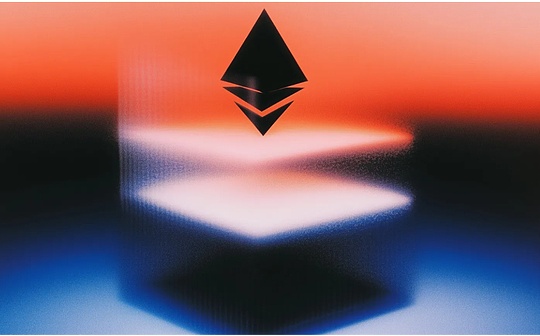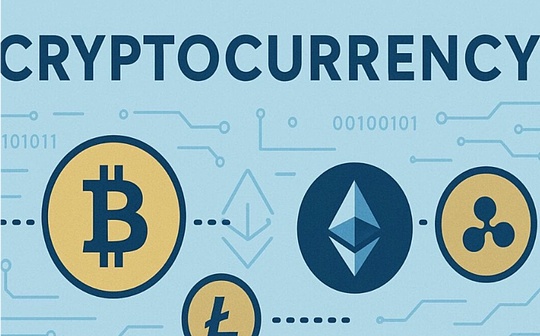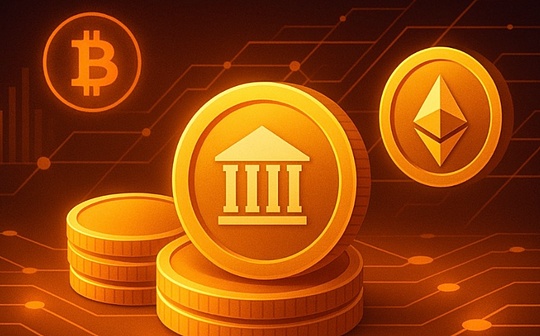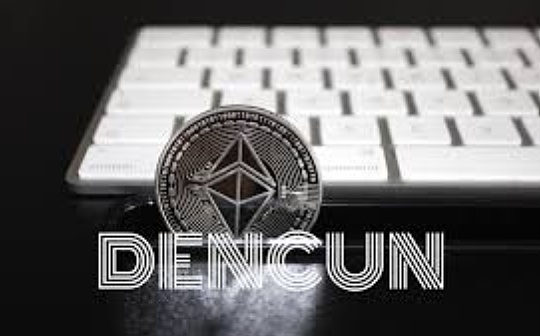
Author: Vince Quill, Cointelegraph; Compilation: White Water, Bit Chain Vision Realm
2024 is an important year for cryptocurrencies and blockchain networks.This year, the United States launched the exchange fund (ETF) of Bitcoin and Ethereum and Isauro, and the altoscopic upgrade and the release of new infrastructure networks.
The following are 10 encryption projects that have been upgraded or released by major agreements in 2024, and the rankings are not separated.
Avalanche9000/ETNA protocol upgrade
The Avalanche9000 upgrade of the Avalanche network, also known as ETNA, is known as the largest upgrade in the history of the agreement. After the testing stage on the FUJI test network, it was launched on December 16 on December 16.
This update simplifies the process of promoting subnets (now known as the “1st Floor”), and the pledge of subnet verification device requires a change from the fixed 2,000 AVAX to the cost structure of the number of nodes based on the verification device.
According to the Avalanche Foundation, the upgrade has reduced the cost of the sub-network by 99.9%and reduced the C-Chain network cost by 96%.
The update also transferred the responsibility of the management verifications from Avalanche P-Chain to the first floor, so that they had greater autonomy and control over their networks.
Sui implementation mysticeTi consensus engine
The SUI protocol is a high -throughput blockchain, which realized the MySticeTi consensus engine in August.
According to a spokesman for SUI’s developer Mysten Labs, the update will shorten the consensus to 390 milliseconds and minimize the cross -verifier communication to improve efficiency.
SUI’s ability to deal with a large number of transactions (TPS) per second helps it and other single -chip chains to occupy a place on the existing smart contract platform in 2024.

The throughput and delay of mysticeti.Source: sui
SONIC Foundation launched SONIC main network
In May 2024, the Fantom Foundation (organization behind Fantom network) announced that the Sonic Foundation will supervise its Sonic Chain deployment.
SONIC CHAIN is a Layer-1 blockchain compatible with Ethereum virtual machine. It has the characteristics of a second-level end time, a 10,000 TPS throughput, and introducing the Sonic Gateway (bridge between Sonic and Ethereum).
On December 18, Sonic’s main web is online.Fantom tokens can switch to the new network by upgrading from FTM to one -to -one to Sonic (native assets of Sonic networks).
Hyperliquid launches tokens to achieve pledge
Hyperliquid is a Layer-1 blockchain optimized for decentralized finance. On November 29th, one of the largest token airdrops in the history of cryptocurrencies was launched.
The project distributed 310 million Hype tokens to community members and was worth $ 1.2 billion when it was issued.The initial price of Hype is $ 3.90, and the current transaction price is about $ 26.8.
On December 30, Hyper Foundation announced the launch of native pledge on the Hyperliquid protocol, allowing users to lock the tokens in exchange for income to protect network security.
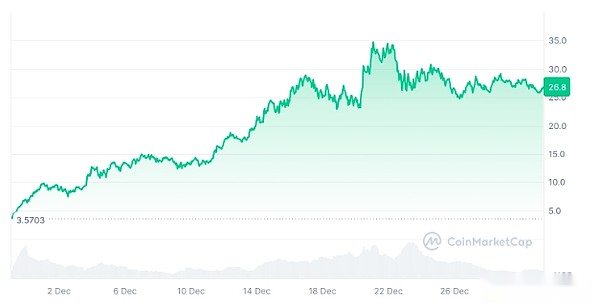
Hype token price trend.Data source: coinmarketcap
Ethereum Dencun upgrade and go online
The DENCUN of Ethereum was upgraded to the launch on March 13, reducing the cost of Ethereum on the second floor of Ethereum by as much as 99%.
However, due to the transfer of users to the lower level of cost, the significant reduction of L2 network costs also caused the first floor of Ethereum to plummet in August and September.
According to the data of Token Terminal, the network fee of the first floor of Ethereum rebounded from November to the level of early 2024 before the implementation of Dencun.
The upgrade caused different reactions in the Ethereum community. Some people praised the burden of transactions through the second floor, and others criticized many L2 solutions on the Internet to eat the income of the first floor of Ethereum.
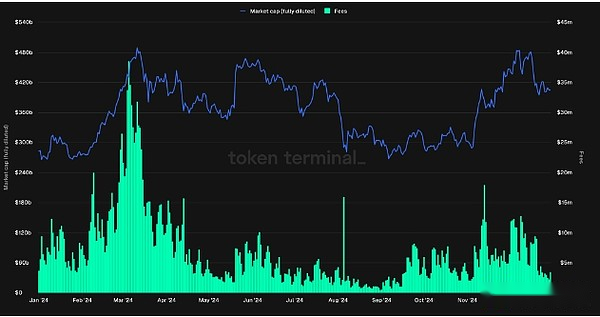
From January to December 2024 to December Ethereum, the first layer of network costs.Source: Token Terminal
Cardano’s Chang hard fork introduced the chain governance
Cardano’s Chang hard fork was implemented on September 1st, bringing chain and decentralized governance to the network.
This update enables all holders of Cardano’s token ADA to participate in the voting process and determine the future direction of the 1st chain.
Near Protocol implements NightShade 2.0 to achieve stateless verification
Near Protocol is a Layer-1 blockchain focusing on decentralized artificial intelligence. It changed its network architecture by the implementation of NightShade 2.0 update in August.
The agreement was upgraded to NEAR to introduce stateless verification, allowing the verification device node to verify the transaction without the need to store the blockchain copy on its device.
This method reduces the hardware requirements for running verification machine nodes and reduce the entry threshold for new participants.
After the launch of NightShade 2.0, the protocol’s native asset Near soared by 50%within a month.
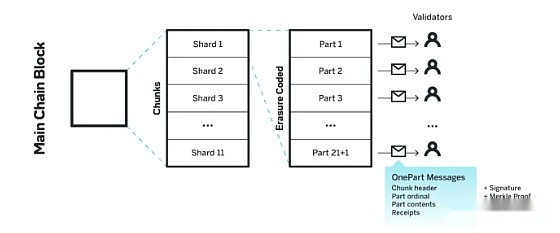
Near’s shard design.Source: nearweek
Movement main network startup
On December 9, the Movement Network Foundation launched the Movement main network (a Ethereum expansion solution using the Move virtual machine to settle in the Ethereum network) and Move token.
According to the Foundation spokesman, the MOVE main network has the final determination time of the sub -seconds and uses the MOVE programming language.
The programming language is widely praised by blockchain developers for its ease of use and expression.
ChainLink launches cross -chain interoperability protocol
Oracle Network CHAINLINK issued a cross -chain interoperability agreement (CCIP) in April 2024.
CCIP promotes cross -chain transfer and smart contract communication between tokens between different blockchain ecosystems.
Since the first appearance of interoperability solutions, CCIP has been integrated by multiple blockchain networks, including the 2nd layer expansion solution ZKSYNC and the game blockchain network Ronin.
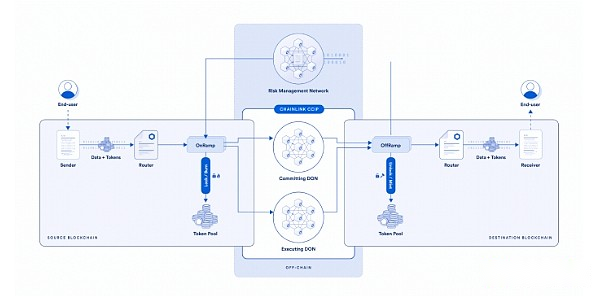
CHAINLINK CCIP’s simple description.Data source: chainlink
Stacks complete Nakamoto upgrade
Stacks is the second layer of Bitcoin’s expansion solution, and the Nakamoto upgrade was completed on October 9.
The upgrade introduced 100% Bitcoin’s finality and improved network throughput.
After the update, the block production is no longer decided by the miner election.Instead, the block is now produced in a fixed interval.
Within a few weeks before the agreement upgrade, the number of smart contracts on Stacks reached a record high of 1,400 monthly contracts.


